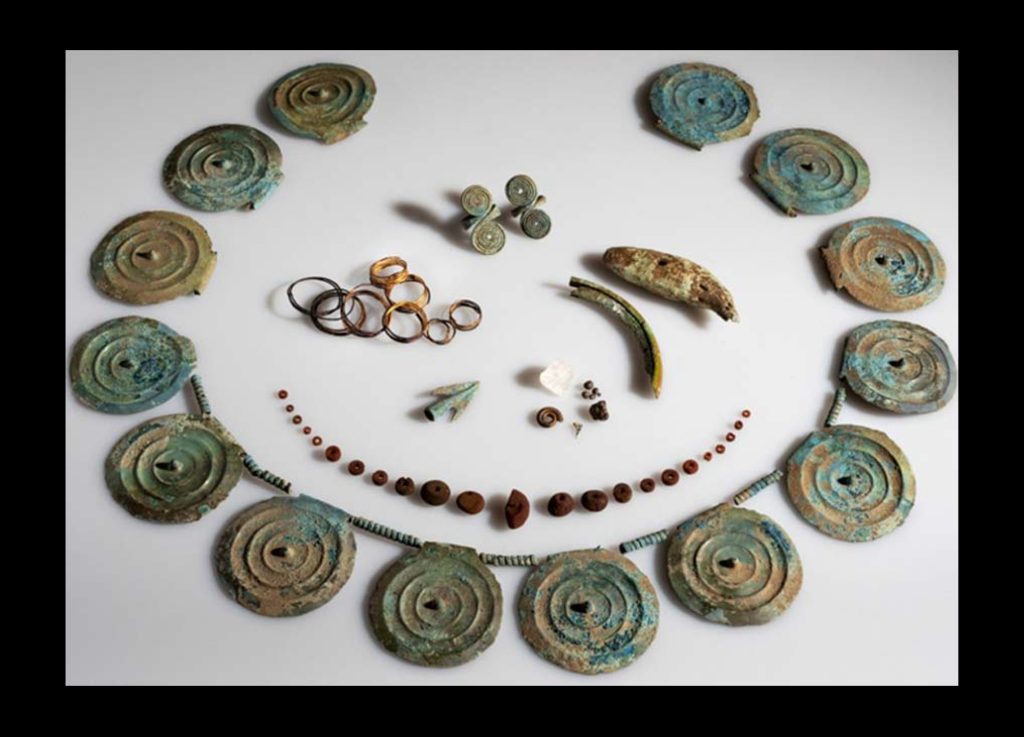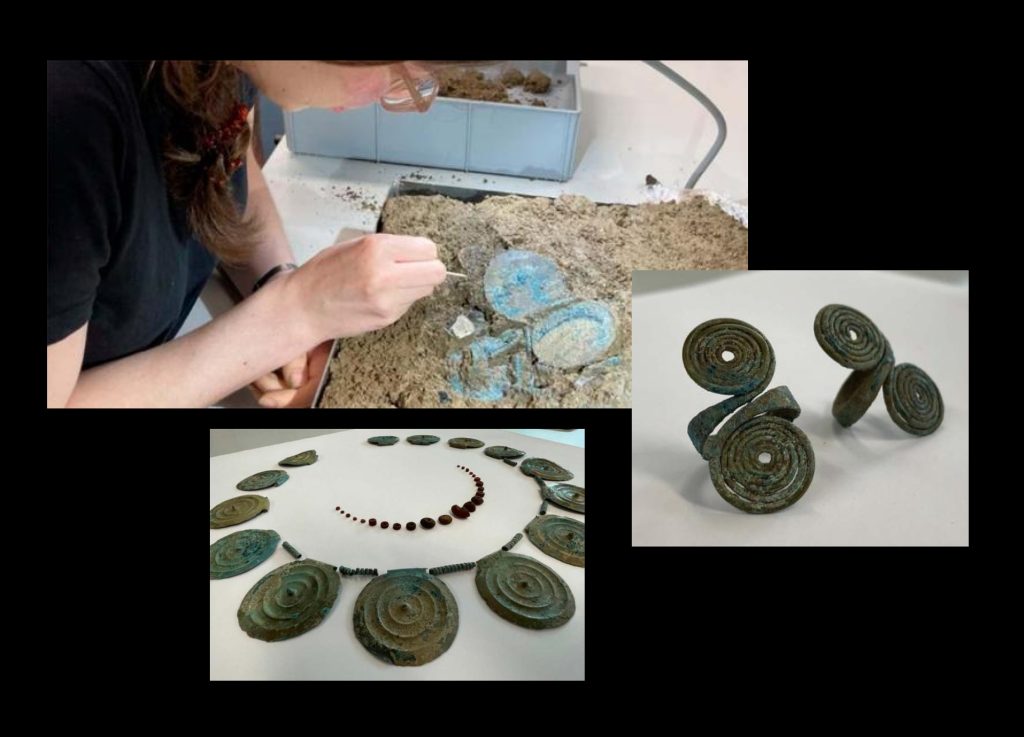
In a remarkable archaeological discovery, a collection of jewellery dating back to the Middle Bronze Age has been discovered in the village of Güttingen, Switzerland. The find, which started in August, showcases a collection of ancient artefacts with captivating historical significance.
The hoard consists of an array of jewellery items, including 14 striking spiked jewellery discs, two intricately designed spiral finger rings, and an astonishing collection of over 100 minuscule amber beads, some no larger than pinheads. These precious relics were discovered in a former carrot field, recently ploughed in August.
Accompanying this magnificent Bronze Age jewellery ensemble was a myriad of fossilised animal remains, and a host of miscellaneous artefacts emerged from the depths of the earth. Amongst these discoveries were a well-preserved bronze arrowhead, lumps of polished ore, an ammonite, an extinct marine mollusc, a shark’s tooth, a perforated bear’s tooth, and a pristine rock crystal.
The remarkable discovery was attributed to Franz Zahn, who stumbled upon the treasure while clearing scrap metal on behalf of an unidentified farmer in Güttingen back in August. Zahn meticulously extracted the delicate amber beads from the soil using tweezers, promptly alerting the local Office of Archaeology about his remarkable finds, leading to a thorough site investigation.

Upon their arrival, archaeologists recognised the necessity of block recovery, an extensive process that involved carefully removing a 50x50x50cm block of earth containing the artefacts. This invaluable earth block was transported to a laboratory in Frauenfeld, where a skilled restorer unveiled its contents.
The process involved layer-by-layer documentation of the findings, providing researchers with insights into the circumstances surrounding their deposition in the soil. This investigative method was significantly informed by a similar discovery near Etzwilen from two years earlier, contributing to the knowledge acquired during this latest excavation.
Archaeologists have determined that the exquisite jewellery items discovered in Güttingen represent typical costume jewellery that adorned the women of the Bronze Age around 1500 BC. The distinctive spiked discs, noted for their eye-catching charm, were interconnected with metal spirals acting as spacers. Each disc featured a narrow hole, enabling easy threading with thread or leather for wearing as decorative ornaments, as reported by The Heritage Daily.
11 of these spiral pieces were found in Güttingen. Additionally, the hoard included eight slightly larger spirals crafted from fine gold wire, their combined weight exceeding an impressive 21 grams. The ensemble was further enriched by the presence of over 100 captivating amber beads and two finger rings adorned with intricate double spirals. This remarkable collection provides a captivating window into the ancient world and the ornate adornments worn by its inhabitants during the Bronze Age.
Further reading: